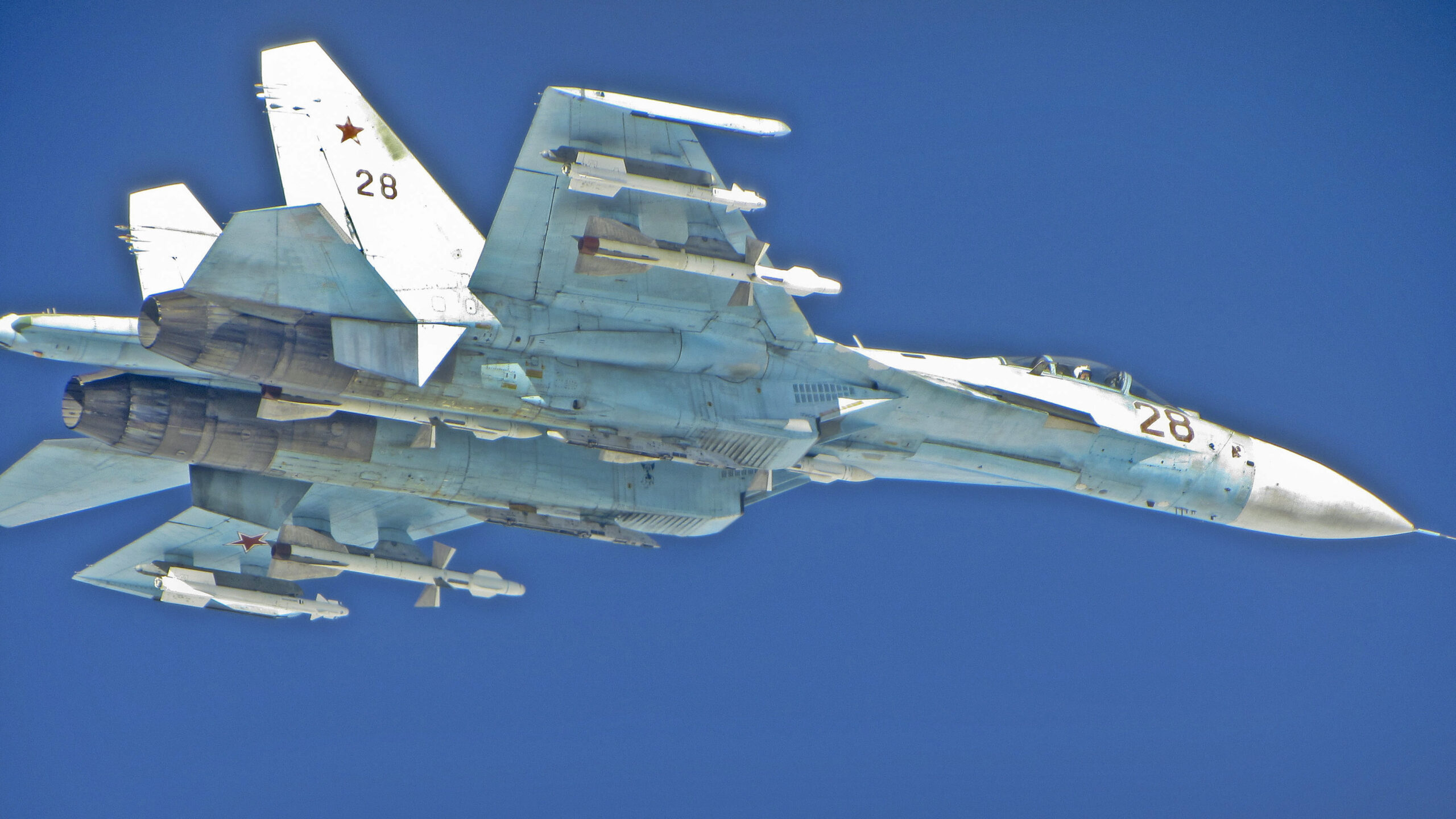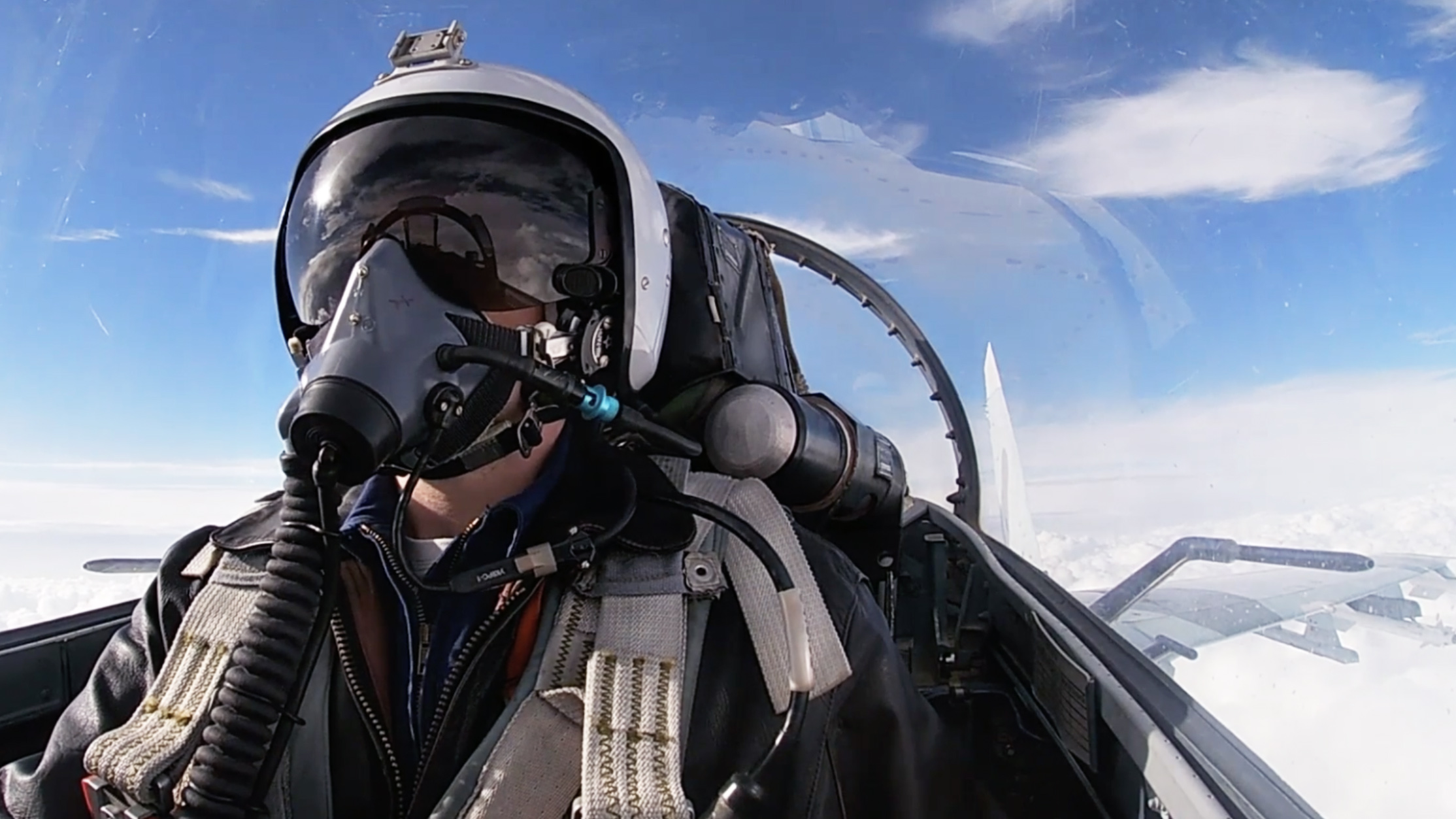More details have emerged about the incident last September in which the pilot of a Russian Su-27 Flanker fired a missile in the vicinity of a U.K. Royal Air Force RC-135W Rivet Joint surveillance aircraft over the Black Sea. The missile launch, which we reported on at the time, had been explained by Russia as a “technical malfunction,” a theory that the U.K. Ministry of Defense had also publicly backed. Subsequently, leaked classified materials from the U.S. Department of Defense suggested that the missile was actually fired deliberately after the Flanker pilot misunderstood an order. The U.K.’s public service broadcaster now reports that two missiles were fired, with the first missing its target, rather than malfunctioning.

The latest revelations, if true, suggest that the entire episode could have been much closer to being a major diplomatic crisis and tragedy, had the missile not simply missed its target.
The BBC says that it received more details about the close call from “three senior Western defense sources with knowledge of the incident.”
The original account
The encounter between the RAF RC-135 and the Russian Su-27s took place over the Black Sea last September 29. Initial details were disclosed by the then U.K. Defense Secretary Ben Wallace, during a speech in the House of Commons in October.
Wallace said that the “unarmed RAF RC-135 Rivet Joint,” flying from its base at RAF Waddington in the United Kingdom, was “interacted with” by two Russian Su-27s, which shadowed it for a total of around 90 minutes. One of the Russian fighters “released a missile in the vicinity of the RAF Rivet Joint [from] beyond visual range.”
The U.K. defense secretary described the event as a “potentially dangerous engagement” but not a “deliberate escalation.”
Describing the missile “release,” the British defense secretary said: “Our analysis would concur it was a malfunction.” This was the same explanation provided by Russian officials, too.
The Pentagon leak
In April this year, however, a new account emerged, part of the leak of hundreds of classified Pentagon documents.
These documents first brought up the possibility that the Su-27 pilot had misunderstood an order given to him by a ground control intercept (GCI) operator and had fired an air-to-air missile at the spy plane deliberately. The same account did, however, agree that the weapon had suffered a technical malfunction.

The U.K. Ministry of Defense was quick to question the reliability of these classified Pentagon documents, issuing a warning about a “serious level of inaccuracy” in the leaked information. The defense ministry added that “readers should be cautious about taking at face value allegations that have the potential to spread disinformation.”
However, the claim from the leaked documents was also supported by two unnamed U.S. defense officials, who spoke to the New York Times about the incident. One of those U.S. defense officials described the incident — which occurred over international waters — as “really, really scary.”
The same article added some more details, including the fact that the two Su-27s involved were not within visual range of the RC-135 but were equipped with beyond-visual-range air-to-air missiles and that one of the Russian pilots achieved a successful missile lock on the British aircraft, before launching their weapon. The article stated that the incident occurred off the coast of Russian-occupied Crimea, already an international hot spot due to the war in Ukraine.

The latest revelations
Providing that the “three senior Western defense sources” that spoke to the BBC are correct in their assessment, we now have a much clearer picture of what likely happened.
Those sources, like those who spoke to the New York Times, say that they were party to Russian communications intercepted by the RC-135 during the mission.
Again, the intercepted communications are said to show that one of the Russian pilots mistakenly thought they had permission to engage the RC-135.

According to the BBC, one of the sources said the pilot received words to the effect of “you have the target.” It was this ambiguous language that led to the pilot’s misinterpretation — and a deliberate missile launch.
Suddenly aware of what was happening, the second Russian pilot remonstrated with his wingman after he fired the first missile. This led to a full-on argument between them, complete with expletives. That first missile “successfully launched but failed to lock on to its target, the BBC has been told. It was a miss, not a malfunction.”
Even after this dressing down from the wingman, the first pilot then fired another missile toward the RC-135. The BBC account says that the second missile “simply fell from the wing — suggesting the weapon either malfunctioned or that the launch was aborted.”
Of course, this could also be the missile that had a “technical malfunction,” as originally claimed by the U.K. Ministry of Defense and its Russian counterpart and then repeated by the U.S. defense officials in the New York Times story.
A Russian Su-30SM fighter firing the same R-27 and R-73 missiles as also routinely carried by the Su-27:

The War Zone has reached out to the U.K. Ministry of Defense for clarification and their spokesperson provided the following statement:
“Following an incident last September between an RAF Rivet Joint aircraft and two Russian Su-27 fighter jets over the Black Sea, the former Defense Secretary informed the House of Commons within three weeks of the event occurring in the interest of transparency and safety.”
“Our intent has always been to protect the safety of our operations, avoid unnecessary escalation, and inform the public and international community. This incident is a stark reminder of the potential consequences of Putin’s barbaric invasion of Ukraine.”
There is growing evidence to suggest that this really was a near shootdown and one that would have been deliberate, at least as far as the launching pilot’s actions are concerned. Certainly, it raises some very serious questions about the professionalism of Russian pilots during routine operations in a strategically vital part of the world, where tensions are already ratcheted up.
Perhaps more worrying still is that this doesn’t seem to have been an entirely freak situation. After all, in an incident in March this year, a Russian Su-27 brought down a U.S. MQ-9 Reaper surveillance drone over the Black Sea. A video released by the Pentagon soon after seems to confirm that one of the Su-27s struck the drone’s propeller, although it remains unclear to what degree that action was deliberate or a misjudgment. Nevertheless, the Flanker pilot was awarded a medal for their actions.

You can read our initial reporting of the MQ-9 incident here as well as our analysis of a video that was purportedly shot from the cockpit of one of the two Su-27s here, and of sensor imagery taken from the drone itself, here.
There have been reports of other “air-to-air incidents” between NATO and Russian aircraft since the September 29 encounter. Between October 1 and February 22, for example, it was reported that British, French, and U.S. aircraft “reacted to six different events in which Russian aircraft approached their patrols.” In one incident, on December 30, 2022, it seems a British RC-135 escorted by two Typhoon fighters, was intercepted by Russian jets that came within 100 feet.
Typhoon fighter escorts have been a regular part of RC-135 missions over the Black Sea ever since the near-miss and following a brief pause in RAF Rivet Joint operations in this region.

Generally, Russian pilots have a reputation for sometimes aggressive intercepts of NATO and allied aircraft in international airspace. Although the Pentagon, especially, is quick to accuse Russian pilots of unprofessionalism, it’s arguable just how many of these highlighted intercepts are genuinely reckless.

In the case of the September 29 encounter between the RC-135 and the Su-27s, there is, however, no doubt that the outcome could have been much, much worse. It appears that a whole range of different safeguards were essentially overridden by a trigger-happy or panicked pilot. After all, the rules of engagement that would have existed in international airspace should have precluded anything like this happening. A visual ID would normally be required to show the pilot that what they were firing upon was a genuine threat, or showing hostile intent, neither of which was the case. There also should have been further confirmations with the GCI station to confirm what was happening.
Aside from all those steps to verify an actual hostile aircraft, there should have been various physical measures surrounding weapons arming to prevent the pilot from accidentally hitting the trigger and releasing a missile. Typically, these are the master arm and last arm switches, followed by the trigger itself.
A simple communication misunderstanding should never be enough to get to the point of firing on another aircraft, especially one that has not been ID’d and is obviously in international airspace.
The War Zone spoke to Air Marshal Greg Bagwell, a former deputy commander of the RAF, who pointed out the use of clearly identifiable brevity codewords in NATO operations, including the familiar ‘bandit’ for an identified hostile aircraft.
“There are a bunch of other words that you’d use for an unidentified or an unknown and you’d make your decisions or your acts off the back of that and then have to add extra information in order to confirm what it was,” Bagwell explained. “Now, if he had misheard — a contact or target or bogey or bandit, as we would use those sorts of words — maybe the bloke just went ‘Right, I’m cleared to fire,’ and literally made the last-arm switch, pulled the trigger and off it went.”
Bagwell also noted that it’s unusual that the Su-27 pilot didn’t cross-check the upcoming engagement with his wingman, for example, to avoid both jets firing at the same target at the same, time as well as to simply confirm that the order that he thought he had heard was real.
Bagwell also raised the possibility that, on realizing the scale of his error, the culprit pilot may have deliberately broken the lock on his first (radar-guided) missile, stopping it from homing on the RC-135, and then jettisoned the second missile, leaving it to fall away into the sea and making the story of a “technical malfunction” more plausible. At the same time, the age and sometimes poor maintenance standards that exist in the Russian Aerospace Forces may have genuinely resulted in two missile failures. A missile failing to perform as advertised once in combat is hardly a new phenomenon and also affects more modern missile types.
Even without the missile reaching its target, it seems that the U.K. and Russian defense ministries may have been forced to downplay what happened as a means of avoiding escalation since they both pushed the story of a “technical malfunction.”
This is hardly an ideal situation, especially with very regular surveillance flights over the Black Sea and the backdrop of heightened tensions between Russia and the West as a result of the war in Ukraine. The Cold War sadly gives us plenty of examples of surveillance aircraft, in particular, having been engaged by fighters, mainly from the Soviet Union. While hardly comparable to those times, the latest allegations about the September 29 incident provide a salutary reminder about the high stakes involved in these kinds of aerial encounters and the very real need for cool heads in all quarters.
Contact the author: thomas@thedrive.com
